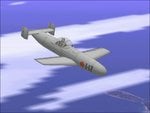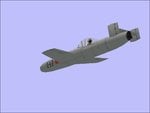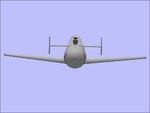cherry blossom
Senior Airman
- 539
- Apr 23, 2007
I don't feel that use of the word Kamikaze shows any racial disrespect. Several Japanese sources use the term in their official English translations such as at ???????? where it is written at the bottom of the page. Those sources may themselves show some disrespect for the leaders of Imperial Japan but not for the pilots involved. An example might be Emiko Ohnuki-Tierney Kamikaze Diaries: Reflections of Japanese Student Soldiers by Emiko Ohnuki-Tierney, an excerpt and Kamikaze, Cherry Blossoms, and Nationalisms: The Militarization of Aesthetics in Japanese History, Ohnuki-Tierney. When Japanese books are translated into English, Kamikaze is often used in the translations presumably with the approval of the Japanese authors as in "Thunder Gods: The Kamikaze Pilots Tell Their Story" by Naito, Hatsuho; Ichikawa, Mayumi Thunder Gods: The Kamikaze Pilots Tell Their Story by Naito, Hatsuho by Naito, Hatsuho; Ichikawa, Mayumi: Kodansha Amer Inc 1989-05-01 9780870119095 Hardcover - Anaco Books.Yeah, okay I understand, and fair enough. But the japanese never referred officially to their Special Attack Corps as "kamikazes". They were popularised in the west by that name, and it may even have been used in their local popular press. But I am yet to find any evidence of that. If you want to be a bit pedantic , it should really should be shown as two separate words ie Kami Kaze and not the bastardised westernised version of 'kamikaze", since in japanese language the term is a combination of two words. of course, in the post war, it probably crept into even Japanese language as a new word, because of the gradual westernization of the country and the popularization of the supreme saacrifices made by these men.
I dont think we as observers have the moral right to show such disrespect .......they were our mortal enemeies, but they fought more bravely that just about any other group of warriors in human history....



